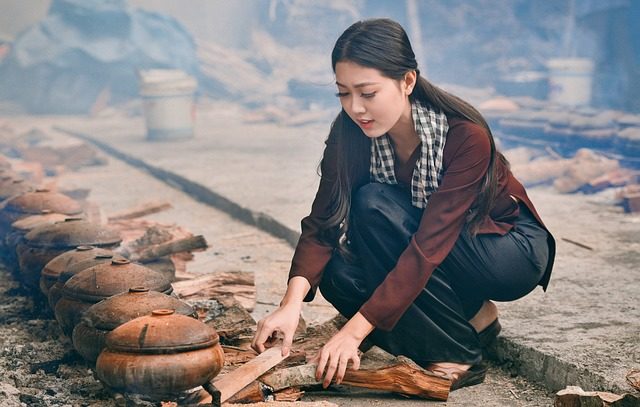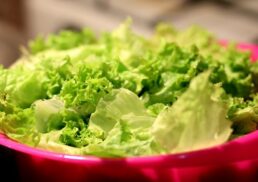Imagine unlocking the secrets to enhancing the flavors of your favorite dishes while also reaping the health benefits of traditional cooking methods. Claypot cooking, an ancient technique originating from China, offers just that. In this blog post, we will explore the versatility of claypots, discuss how to choose the right claypot, share top claypot recipes, provide tips on caring for your claypot, and dive into customer experiences with claypots. Get ready to embark on a culinary journey that will elevate your cooking skills to new heights.
Table of Contents
Key Takeaways
Clay pots are a versatile cookware with excellent heat retention properties, making them ideal for stovetop and oven-baked dishes.
Consider design, handle and lid options when selecting the right clay pot to ensure desired cooking properties.
Cleaning, seasoning storing and protecting your clay pot can maximize its longevity while exploring delicious recipes such as Cantonese Claypot Rice or hearty stews & soups.
The Versatility of Clay Pots

Clay pots, also known as hot pot cookware, boast a rich Chinese culinary history and are prevalent across various regions in China. Their even heat distribution makes them flawless for cooking rice, stews, and other dishes that demand slow, steady heat.
With a sandy exterior texture and a smooth glazed interior, Chinese clay pots, also known as sandy pots, are popular in San Francisco. They are ideal for heat retention and flavor enhancement in your favorite dishes.
Cooking with Clay Pot on Stovetop
Clay pots can be used on any stovetop, including gas, electric, and induction, making them versatile for both home and business environments. The benefits of using clay pots for cooking include:
The porous surface of the clay enables a diffuse heat distribution, resulting in a uniform cooking process.
The use of a heat diffuser can further ensure an even heat distribution.
This gentle method of cooking is perfect for dishes with mixed ingredients and sauces, such as rice, soup, stews, curries, and casseroles.
But how does a clay pot stack up against other cookware for stovetop cooking? One key advantage is that clay pots are excellent at retaining moisture. This means that your dishes will stay moist and tender throughout the cooking process, making for a delicious and satisfying meal every time.
Oven-Baked Dishes in Clay Pots
Clay pots aren’t confined to stovetop cooking; they excel in creating oven-baked dishes too. Some popular oven-baked dishes that can be prepared in a clay pot include:
Pulled pork
Roasted chicken with leeks
Chinese clay pot rice
Clay pot silkie chicken wonton soup
Moroccan chicken tagine
Oven cooking in a clay pot offers a unique experience with its gentle and even heat distribution. The porous nature of clay traps steam, ensuring that your food stays moist and delicate. Moreover, clay pots possess excellent heat retention properties, allowing for cooking at lower temperatures and for shorter durations than other cookware. With so many advantages, it’s no wonder that oven-baked clay pot dishes have become a favorite among home cooks and professional chefs alike.
Choosing the Right Clay Pot
In the process of selecting the perfect clay pot, factors like traditional versus modern designs and handle and lid options should be considered. The design of the clay pot greatly influences its cooking properties, as it can preserve the aroma, taste, and moisture of the dish being cooked. Handles and lids also play a crucial role in providing a secure grip for handling and lifting the pot, as well as sealing in heat and moisture during cooking. Understanding these factors will help you choose the ideal clay pot for your culinary needs.
Traditional vs. Modern Clay Pots
Traditional clay pots are typically handcrafted using traditional methods and materials, such as terracotta clay. These pots have a more rustic aesthetic and are renowned for their capacity to maintain heat and enrich the flavor of food. Modern clay pots, on the other hand, may be produced using various types of clay and may incorporate modern techniques and designs. They may have a more refined and contemporary look. Modern clay pots may also feature additional features, such as non-stick coatings or heat-resistant handles.
There’s no one-size-fits-all answer when it comes to choosing between traditional and modern clay pots. Each type of pot has its own unique advantages and drawbacks, and the best choice for you will depend on your personal preferences and cooking style. For example, if you prefer a more authentic cooking experience and don’t mind a bit of extra care and maintenance, a traditional clay pot might be the perfect fit for you. On the other hand, if you’re looking for a more convenient and easy-to-use option, a modern clay pot with additional features might be a better choice.
Handles and Lids
Handles and lids are essential components of a clay pot, as they contribute to the pot’s ease of use and safety. The most suitable types of handles for clay pots are loop handles, side handles, and pulled clay handles. These handles provide a secure grip, making it easier to manipulate the pot, particularly when it is hot. Lids, on the other hand, assist in trapping heat and moisture inside the pot, guaranteeing uniform cooking and preserving flavors and nutrients.
When selecting a clay pot, it’s important to consider the design and materials of the handles and lids, as they can greatly impact the pot’s heat resistance and overall usability. By choosing a clay pot with well-designed handles and lids, you’ll be able to enjoy a safer and more enjoyable cooking experience.
Top Claypot Recipes to Try
Armed with a better understanding of the versatility of clay pots, it’s time to apply your newfound knowledge by trying out some popular clay pot recipes. From authentic Cantonese clay pot rice to hearty stews and soups, there’s a wealth of dishes just waiting to be explored.
Check out 10 Best Clay Pot Recipes To Try
Authentic Cantonese Claypot Rice
One of the most popular clay pot dishes is the Authentic Cantonese Claypot Rice. This traditional Chinese dish is composed of:
Jasmine rice
Soy sauce
Oyster sauce
Salt
Sugar
Cornstarch
Water
The customary recipe for this dish typically comprises of ingredients such as jasmine rice, soy sauce, oyster sauce, salt, sugar, cornstarch, and water, which come together to create a delicious and satisfying meal.
To prepare this dish, follow these steps:
Rinse the rice under running water and drain it well.
Add the rice to the clay pot along with the desired amount of water.
Cook the rice according to your preferred method, either on the stovetop or in the oven.
Once the rice is cooked, you’ll have a delicious and authentic Cantonese clay pot rice dish to share with your friends and family.
Hearty Claypot Stews and Soups
Clay pots are also perfect for cooking hearty stews and soups, such as:
Thai beetroot soup
Italian tortellini soup
Turkish beef stew
Chicken wonton soup
Daubes (slow-cooked stews from southern France)
The gentle, even heat distribution and moisture retention properties of clay pots make them ideal for simmering these types of dishes, which require slow cooking and a gradual blending of flavors. Clay pots distribute heat evenly and holds heat, ensuring that the food is cooked to perfection.
The benefits of cooking stews and soups in a clay pot are numerous, from preserving the aroma and taste of the food to maintaining moisture and enhancing the flavors of the ingredients. By incorporating clay pot cooking into your repertoire, you’ll be able to create delicious, comforting, and nourishing dishes that are sure to impress your friends and family.
Caring for Your Clay Pot
To ensure your clay pot’s longevity, proper care and maintenance are key. From cleaning and seasoning to storing and protecting, it’s important to follow the appropriate steps to keep your clay pot in top condition.
By doing so, you’ll be able to enjoy the numerous benefits of clay pot cooking for years to come.
Cleaning and Seasoning
Cleaning a clay pot requires some special care. Here are some tips:
Avoid using abrasive scouring powders, soap, or detergent, as these can clog the pores of the clay and make the pot less effective.
Instead, wash clay pots with lemon and hot water.
For stubborn stains, you can use a mixture of vinegar and baking soda.
By following these tips, you can keep your clay pot clean and in good condition.
To season a new clay pot, follow these steps:
Soak the pot in water for a minimum of 8 hours or overnight.
Dry the pot under the sun.
Apply a layer of oil, such as ghee or coconut oil, and place the pot in the sun to dry for 2-3 hours, allowing the oil to be absorbed.
Wash the pot thoroughly.
Store the pot in a cool, dry place.
Storing and Protecting
When it comes to storing your clay pot, there are some important factors to consider:
Store the pot upside down to allow air circulation and prevent moisture buildup.
To protect the pot from damage, place towels or soft padding between pots if you’re stacking them.
Ensure your pot is stored in a cool and dry environment to preserve its quality.
In addition to proper storage, it’s important to handle your clay pot with care to prevent damage. Always use oven mitts or pot holders when handling the pot to protect your hands from the heat, and avoid dropping or banging the pot, as this can cause cracks or breaks. By following these guidelines, you’ll be able to extend the life of your clay pot and enjoy its many benefits for years to come.
Customer Experiences with Clay Pots
Gleaning from the experiences of other clay pot users can yield valuable insights and tips for your clay pot cooking journey. From success stories to common issues and resolutions, the experiences of others can help you make the most of your clay pot and avoid potential pitfalls.
Success Stories
Many customers have embraced clay pot cooking with great success. Cookbook author Paula Wolfert, for example, believes that food cooked in clay pots tastes better due to the pottery’s memory of the food. Clay pot rice is also hugely popular in Hong Kong and Guangdong, where winter dishes are often served sizzling in clay pots due to their superior heat retention.
These success stories demonstrate the incredible potential of clay pot cooking. By incorporating clay pots into your own cooking routine, you too can experience the unique flavors and textures that they can bring to your favorite dishes.
Common Issues and Resolutions
Despite the many benefits of clay pot cooking, it’s not without its challenges. Some common issues faced by clay pot users include fragmentation, chipping, and moisture getting trapped inside the pot, which can cause it to explode.
To resolve these issues, it’s important to take proper care of your clay pot. This includes cleaning and seasoning the pot as needed, storing it properly, and handling it with care to avoid damage. By addressing these common issues and following the recommended care guidelines, you can ensure that your clay pot remains in top condition and continues to provide you with exceptional cooking results.
Buying Guide: Where to Find Quality Clay Pots
If you’re considering buying a quality clay pot, a range of options awaits you. From the Heavy Duty Claypot available on Amazon.com to specialty stores and local businesses, there are plenty of places to find the perfect clay pot for your needs.
Amazon.com: Heavy Duty Claypot
The Heavy Duty Claypot on Amazon.com is a popular choice among clay pot enthusiasts. Here are some reasons why:
Robust design and premium quality ceramics
Highly praised for its durability and performance
Functionality and thoughtful design
Attractive lid design
Customers have commended these features of the Heavy Duty Claypot and have appreciated the full refund policy.
Thorough product research and reading customer reviews are crucial when purchasing a clay pot on Amazon.com to ensure your investment in a high-quality pot. This will help you make an informed decision and enjoy all the benefits that clay pot cooking has to offer.
Specialty Stores and Local Businesses
In addition to online retailers like Amazon.com, specialty stores and local businesses are also great places to find quality clay pots. Examples of such stores include:
Little Baja
Border Concepts
Bram of Sonoma
Sheffield Pottery
TOIRO
Purchasing a clay pot from a specialty store or local business not only supports local artisans and businesses but also ensures that you’re receiving a quality product. By visiting these stores in person, you’ll have the opportunity to inspect the clay pots and ask questions before making a purchase, ensuring that you find the perfect pot for your needs.
Summary
In conclusion, clay pot cooking offers a unique and rewarding culinary experience that can enhance the flavors of your favorite dishes while also providing numerous health benefits. By understanding the versatility of clay pots, choosing the right pot, trying out popular recipes, and properly caring for your clay pot, you’ll be well on your way to mastering the art of clay pot cooking. Whether you’re a seasoned chef or a home cook looking to try something new, clay pot cooking is a time-honored tradition that can bring a touch of authenticity and depth to your culinary creations.
Frequently Asked Questions
Are clay pots good or bad for you?
Clay pots made from 100% natural clay without any additives or glazes offer a healthier alternative to modern cookware options, as they are entirely natural and chemical-free. Therefore, clay pots are good for you.
What is special about clay pots?
Clay pots are special because their porosity and natural insulation properties promote even heat circulation, making cooking easier and food tastier. Additionally, clay pots have various health benefits.
Why are clay pots better for cooking?
Cooking in a clay pot has numerous advantages over normal utensils, including improved food quality and health benefits. The porous structure and natural insulation properties of clay cause heat and moisture to circulate well within the pot.
What are traditional clay pots used for?
Clay pots have been used for many purposes throughout history. They were traditionally used to cook, store beer, ferment sorghum meal, fetch water and even in religious ceremonies. Clay pots are also excellent choices for making dishes that need to be simmered, stewed or braised as they take longer to heat up but then retain the heat for steady, gentle cooking.
What types of dishes are suitable for cooking in Chinese clay pots?
Slow-cooking dishes such as stews are perfect for cooking in Chinese clay pots, which have a sandy texture.









